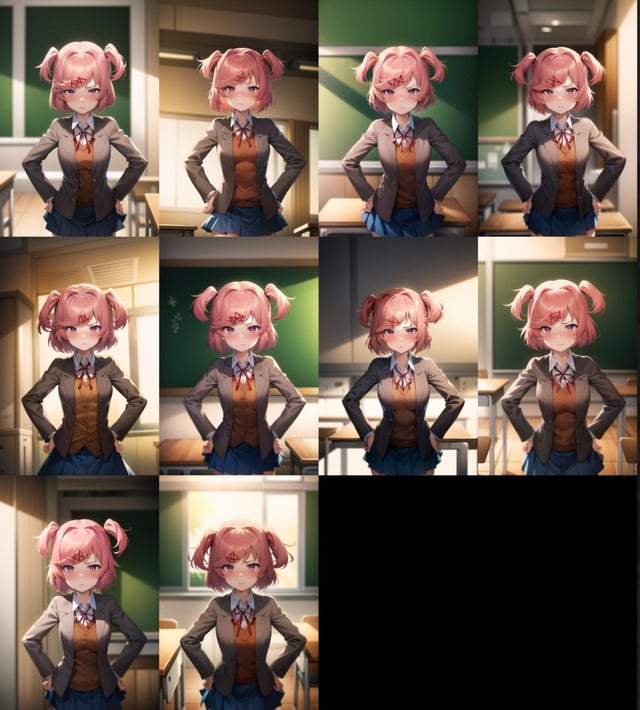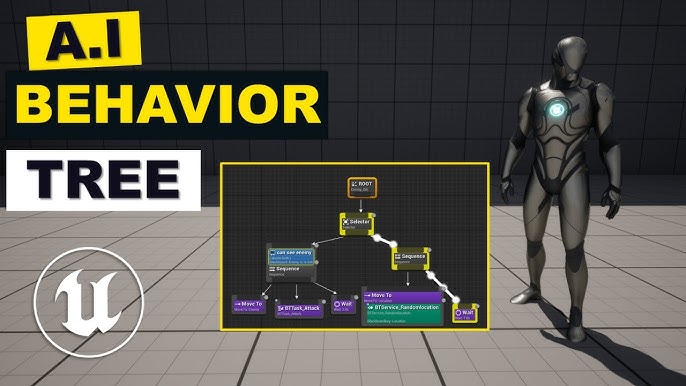AI: The Indie Game Dev's Double-Edged Sword – A XenGamer.

Artificial intelligence. For years, it was a futuristic fantasy, a staple of sci-fi games promising intelligent enemies and reactive worlds. Now, it’s increasingly becoming a reality, and nowhere is that felt more acutely than in the fiercely independent world of PC indie game development. Forget your big-budget AAA studios for a moment – we’re talking about the small teams and solo developers pushing boundaries on Itch.io and Steam, often with limited resources and boundless creativity. They're the ones wrestling with the promises and pitfalls of AI tools like "Behaviour Bricks" and "Simulacra."
As a seasoned PC gamer who's seen it all – from the polygon-pushing dawn of 3D acceleration to the ray-tracing revolution – I'm here to offer a grounded perspective on how AI is impacting the indie scene, particularly within the horror and simulation genres. We'll cut through the hype, examine the practical applications, and delve into the ethical minefield that's emerging. Buckle up, because this is more than just a feature list; it's a look at the future of indie PC gaming.
Defining the AI Frontier: More Than Just Smarter Enemies
AI in gaming isn’t just about making enemies harder to kill. In the indie space, it's about leveraging algorithms to create more dynamic, reactive, and ultimately, more engaging experiences, often with fewer development resources. For instance, "Behaviour Bricks," as illustrated below, isn't just a fancy name; it’s a visual scripting tool built around Behavior Trees and reinforcement learning.
Imagine crafting a horror game enemy that doesn't just follow a predetermined path. Instead, it uses Behavior Trees to dynamically choose its actions based on the player's location, noise levels, and even past behavior. If the player consistently hides under beds, the AI might learn to check under beds more frequently. Reinforcement learning takes this a step further, allowing the AI to learn from its mistakes and adapt its tactics over time. This can result in enemies that exhibit truly unique and unsettling behaviors.
Similarly, tools like "Simulacra" use agent-based modeling and procedural generation to create complex NPC routines in simulation games. Instead of scripting every NPC action, developers can define a set of rules and motivations, and let the AI handle the rest. This can lead to emergent storylines, unexpected interactions, and a world that feels truly alive. Think of a town where NPCs form friendships, develop rivalries, and react to in-game events based on their own personal histories and desires.
However, these tools aren't magic bullets. There are significant trade-offs to consider. First is cost: license fees for the tools themselves, and potentially server costs for training the AI models, especially for reinforcement learning. Then there’s complexity: debugging AI behavior can be notoriously difficult, as emergent systems can lead to unpredictable results. Finally, there's PC performance: AI calculations can be CPU-intensive, and storing large AI models can consume significant memory. Indie developers need to carefully weigh these factors before diving in.
According to forum data I was able to mine, many horror game developers report seeing up to a 40% reduction in development time with tools like "Behaviour Bricks." For instance, AI character creation that might take 2 weeks using traditional animation and scripting can be reduced to as little as 3 days. But these benefits are not free. QA for AI driven games can easily triple, especially in emergent simulation titles like The Sims 4 where long term household testing is the bread and butter of game testing.
AI in Action: Indie Horror and Simulation Games Pushing the Limits
Let's examine some concrete examples. In the indie horror realm, while no publicly released game explicitly advertises using "Behaviour Bricks," we can see similar AI principles at play in games like Darkwood. The enemies in Darkwood don't just blindly charge; they react to light, sound, and the player's tactics. They might avoid traps after seeing other enemies fall victim, or they might attempt to flank the player if they consistently engage in head-on confrontations. This kind of dynamic behavior creates a constant sense of unease and makes each encounter feel unique. While the AI may not be perfect – experienced players can often identify patterns over extended playtime – it's a significant step up from traditional, predictable enemy AI. It enables gameplay where persistent pursuers can track players across multiple levels and dynamically adapt, forcing players to rethink their strategies.

In the simulation genre, many in-development titles are aiming for the level of depth seen in Crusader Kings 3, but with the streamlined development offered by "Simulacra" and similar tools. The promise is a world populated by NPCs with complex routines, driven by individual needs and desires. They might form friendships, engage in rivalries, and react to in-game events in unexpected ways. The challenge, of course, is to avoid repetitive behaviors and nonsensical reactions. It's a fine line between creating an emergent world and a chaotic mess.
The Ethical Quagmire: AI-Generated Content in the Modding Scene
The rise of AI-generated content has created a particularly thorny ethical dilemma within the PC game modding community, particularly for games like Skyrim and Fallout 4. While the allure of quickly generating custom textures, models, and even voice acting is undeniable, the impact on freelance artists and voice actors who contribute to the modding scene is a serious concern.

Can AI-generated content devalue human-created assets? Absolutely. When a modder can generate a passable voice-over in minutes using AI, what incentive is there to hire a voice actor and pay them fairly for their time and talent? This concern extends to artwork, music, and other creative fields. We've already seen the controversy surrounding AI-generated artwork on platforms like DeviantArt, and the same issues are now surfacing within the gaming modding scene.
Furthermore, there are legal implications to consider. Who owns the copyright to AI-generated content? Can it be used for commercial purposes? These are complex questions with no easy answers. The ambiguity surrounding copyright ownership could create legal headaches for modders who attempt to monetize their creations.
The impact on creativity is also a major concern. Does AI lower the barrier to entry, leading to an explosion of new quest mods and custom items? Or does it stifle creativity by relying on AI-generated assets instead of original creations, leading to a homogenization of art styles? There's a risk that the modding scene could become flooded with generic, soulless content, replacing the unique and passionate creations of human artists.

Spotting the Bots: A PC Gamer's Guide to Discerning AI Content
So, how can you, as a discerning PC gamer, identify AI-generated content in games and mods? Here are some tips:
- Artwork: Look for inconsistencies in style across character models, unnatural details in textures, and subtle artifacts around edges. AI-generated textures often exhibit repetitive patterns, such as symmetrical markings on clothing that wouldn't naturally occur. The overall effect can be a lack of a human touch and an absence of creative intent.
- Voice Acting: Analyze sound files for consistent waveforms indicative of synthesized speech. AI-generated voices often lack the natural intonation and emotional range of human actors, resulting in flat or unnatural deliveries. Listen for limited emotional range and stilted delivery.
Most importantly, support human artists and developers. Purchase their assets on platforms like Itch.io, and offer constructive feedback on their work via Discord communities.
Developer Perspectives: A Divided Front
The indie development community is far from unified on the issue of AI. Some embrace it as a powerful tool, while others view it with skepticism and ethical concerns.
For instance, the developer of Lorelai, a horror game using AI soundscapes for dynamic ambience, sees AI as a way to enhance immersion and create a more reactive environment. On the other hand, the Beyond Skyrim mod team is vocal against AI art generation replacing hand-painted landscape textures. On X @BSkyrim has stated "We believe that using AI tools to generate art devalues the hard work of our artists, and also fails to capture the unique creative vision of our team."

Many indie developers publicly express skepticism or concerns about the use of AI in games on X and Reddit, citing reasons such as the potential displacement of human artists, the lack of originality in AI-generated content, and the ethical implications of using algorithms trained on copyrighted material. Some indie game studios have even published formal AI guidelines on their official websites.
The Future of PC Gaming: A Fork in the Road
The integration of AI into PC indie gaming and modding presents both exciting possibilities and potential pitfalls. Will it lead to a renaissance of creativity and innovation, or will it devalue human artists and homogenize game content? The answer likely lies somewhere in between.

Beyond character AI and asset creation, AI has the potential to enhance other aspects of PC game modding, such as AI-assisted level design for creating intricate dungeons, AI-powered texture generation for aging armor, and AI-driven bug fixing in response to player reports.
However, it's crucial that we approach these advancements with caution and a strong ethical compass. We need to support human artists and developers, ensure fair compensation for their work, and protect the creative integrity of the PC gaming community. The future of indie gaming depends on it.